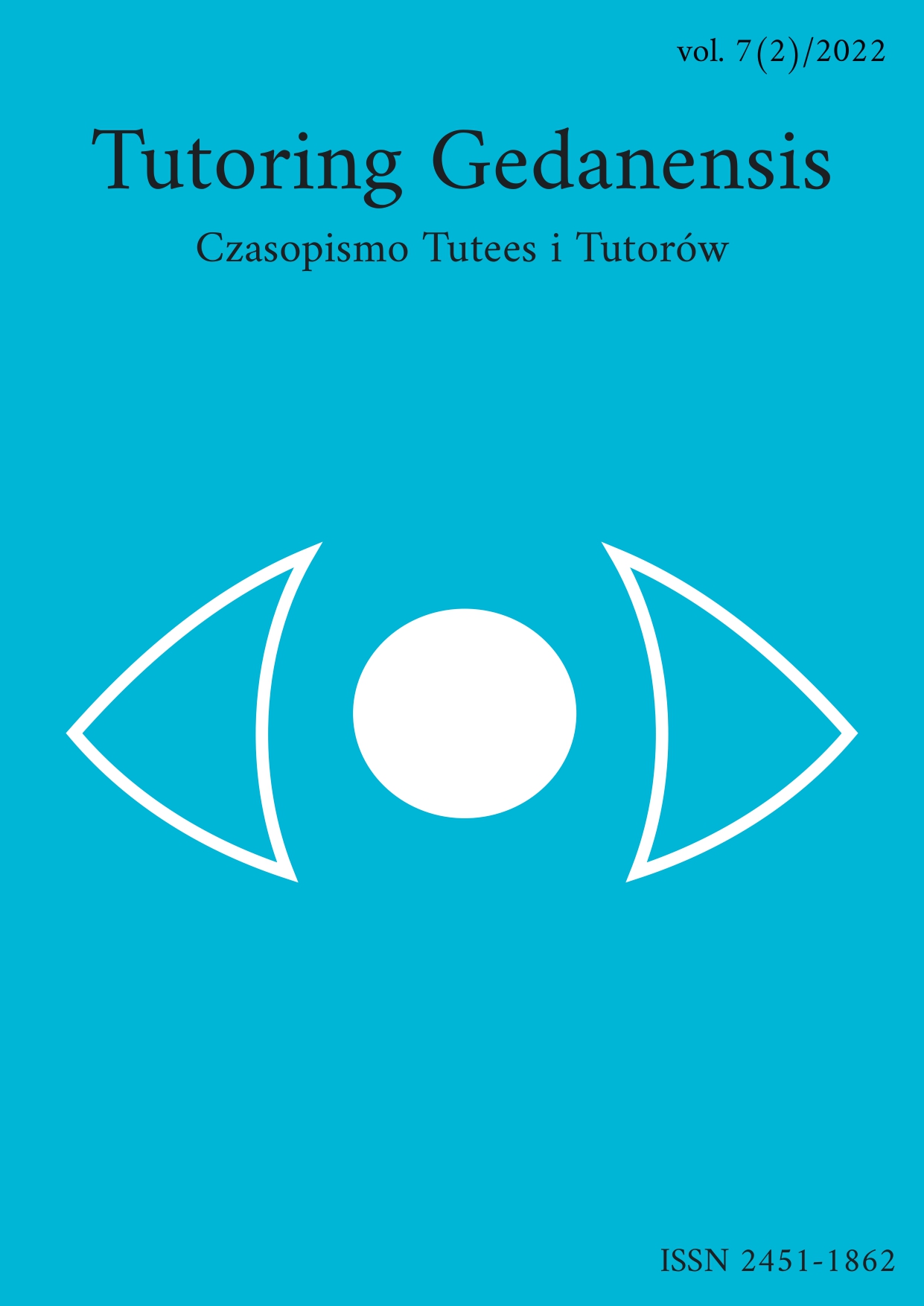Antarktyczne pingwiny Pygoscelis jako wektory zanieczyszczeń antropogenicznych, na przykładzie metali ciężkich
DOI:
https://doi.org/10.26881/tutg.2022.2.06Słowa kluczowe:
Antarktyka, fauna, pingwiny Pygoscelis, metale ciężkieDownloads
Bibliografia
Bargagli, R., 2008. Environmental contamination in Antarctic ecosystems. Science of the Total Environment, 400(1–3), 212–226.
Black, C. E., 2016. A comprehensive review of the phenology of Pygoscelis penguins. Polar Biology, 39(3), 405–432.
Burger, J., 1993. Metals in avian feathers: bioindicator of environmental pollution. Rev Envirom Toxicol 5:203-311.
Corsolini, S., 2009. Industrial contaminants in Antarctic biota. Journal of Chromatography A, 1216(3), 598–612.
Espejo, W., Celis, J. E., González-Acuña, D., Jara, S. Barra, R., 2014. Concentration of trace metals in excrements of two species of penguins from different locations of the Antarctic Peninsula. Polar Biology, 37(5), 675–683.
Flores, H., Atkinson, A., Kawaguchi, S., Krafft, B. A., Milinevsky, G., Nicol, S., Reiss, C., Tarling, G. A., Werner, R., Bravo Rebolledo, E., Cirelli, V., Cuzin-Roudy, J., Fielding, S., Groeneveld, J. J., Haraldsson, M., Lombana, A., Marschoff, E., Meyer, B., Pakhomov, E. Werner, T., 2012. Impact of climate change on Antarctic krill. Marine Ecology Progress Series, 458, 1–19.
Gray, R., Canfield, P., Rogers, T., 2008. Trace element analysis in the serum and hair of Antarctic leopard seal, Hydrurga leptonyx, and Weddell seal, Leptonychotes weddellii. Science of the Total Environment, 399(1–3), 202–215.
Hamel, S., 2014. Heavy metal concentrations in feathers of the Adélie Penguin and the South-Polar Skua from Cape Royds, Ross Island.
Hong, S., Boutron, C. F., Edwards, R., Morgan, V. I., 1998. Heavy Metals in Antarctic Ice from Law Dome: Initial Results. Environmental Research, 78(2), 94–103.
Jerez S., Motas M., Benzal J., Diaz J., Vidal V., D'Amico V., Barbosa A., 2013. Distribution of metals and trace elements in adult and juvenile penguins from the Antarctic Peninsula area. Environ Sci Pollut Res Int.;20(5):3300-11.
Lehnert, K., Weirup, L., Harding, K. C., Härkönen, T., Karlsson, O., Teilmann, J., 2017. Antarctic seals: Molecular biomarkers as indicators for pollutant exposure, health effects and diet. Science of the Total Environment, 599–600, 1693–1704.
Metcheva R., Yurukova L., Teodorova S., Nikolova E., 2006. The penguin feathers as bioindicator of Antarctica environmental state. Sci Total Environ,;362(1-3):259-65.
Metcheva, R., Yurukova, L., Teodorova, S. E., 2011. Biogenic and toxic elements in feathers, eggs, and excreta of Gentoo penguin (Pygoscelis papua ellsworthii) in the Antarctic. Environmental Monitoring and Assessment, 182(1–4), 571–585.
Niemandt, C., Kovacs, K., Lydersen, C., Dyer, B., Isaksen, K., Hofmeyr, G., . . . De Bruyn, P., 2016. Chinstrap and macaroni penguin diet and demography at Nyrøysa, Bouvetøya. Antarctic Science, 28(2), 91-100.
Nygård, T., Lie, E., Rov, N., Steinnes, E., 2001. Metal dynamics in an Antarctic food chain. Marine Pollution Bulletin, 42(7), 598–602.
O’Shea, T. J., Brownell, R. L., 1994. Organochlorine and metal contaminants in baleen whales: a review and evaluation of conservation implications. Science of the Total Environment, The, 154(2–3), 179–200.
Qibin, X., Zhuding, C., Yuesong, G., Yanjun, M., Zhongkang, Y., Yikang, H., Lianjiao, Y., Zhouqing, X. Liguang, S., 2020. Levels, sources and influence mechanisms of heavy metal contamination in topsoils in Mirror Peninsula, East Antarctica. Environmental Pollution, 257, 113552.
Smichowski, P., Vodopivez, C., Mun˜oz-Olivas, R., Gutierrez, A. 2006. Monitoring trace elements in selected organs of Antarctic penguin (Pygoscelis adeliae) by plasma-based techniques. Microchem J 82:1–7.
Squadrone, S., Abete, MC., Brizio, P., Pessani, D., Favaro, L., 2018. Metals in Feathers of African Penguins (Spheniscus demersus): Considerations for the Welfare and Management of Seabirds Under Human Care. Bull Environ Contam Toxicol.;100(4):465-471.
Squadrone, S., Brizio, P., Favaro, L., Todino, G., Florio, D., Da Rugna, C., Abete, M.C., 2019.Humboldt penguins' feathers as bioindicators of metal exposure. Sci Total Environ.;650 (Pt 2):1734-1739.
Walker, C.H, Hopkin, S.P., Sibly R.M. Peakall D.B., 2002. Podstawy ekotoksykologii. Wydawnictwo Naukowe PWN.
Wang, D., Zhu, G., 2022. Antarctic krill (Euphausia superba) as a bioindicator of trace elements reflects regional heterogeneity in marine environments in the northern Antarctic Peninsula, Antarctic. Ecological Indicators, 136, 108596.
Wang, W., Ji, X., Abakumov, E., Polyakov, V., Li, G., Wang, D., 2022. Assessing Sources and Distribution of Heavy Metals in Environmental Media of the Tibetan Plateau: A Critical Review. Frontiers in Environmental Science, 10 (April), 1–15.
Yamamoto Y., Honda K. Tatsukawa R., 1987. Heavy Metal Accumulation in Antarctic Krill, Euphasia superba. Proc. NIPR Symp. Polar Biol., 1, 198-204, 1987.
Yin X., Xia, L., Sun, L., Luo, H., Wang, Y., 2008. Animal excrement: A potential biomonitor of heavy metal contamination in the marine environment. Science of the Total Environment, 399(1–3), 179–185.
underseaice.weebly.com/food-web.html (dostęp: 15.03.2022)
listaptakow.eko.uj.edu.pl/nonpasserines2.html#Spheniscidae (dostęp: 1.03.2022)
https://web.archive.org/web/20100501202914/http://www.pinguins.info/Engels/Pygoscelis_eng.html (dostęp: 1.03.2022)
observation.org/species/73562/ (dostęp: 31.05.2022)
grida.no/resources/3186 (dostęp:31.05.2022)
/observation.org/photos/8832346/ (dostęp: 31.05.2022)

 Uniwersyteckie Czasopisma Naukowe
Uniwersyteckie Czasopisma Naukowe



